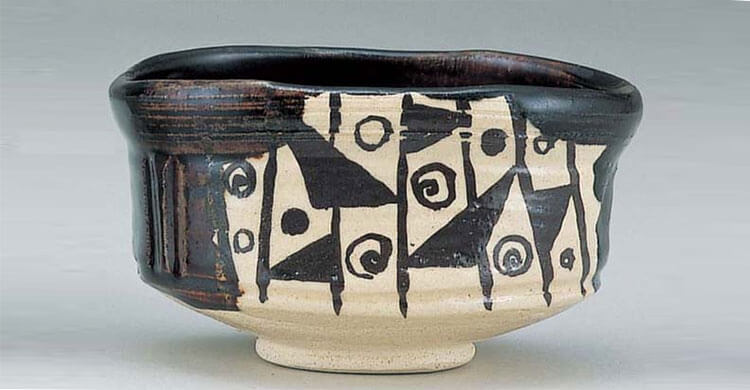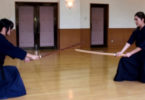Contents
What’s “Oribe-ware” (Oribe-yaki)?
An impressive piece of Japanese pottery. Observe its lopsided shape and whimsical design. This is “Oribe-ware” (Oribe-yaki), which is today’s subject.
Hello everyone how are you doing? Have you ever seen such ugly looking-earthenware that is distorted, asymmetrical chinaware below?
I suppose almost all of you that they were made mistakenly as you haven’t probably used to appreciate to see potteries in your country.
I heard that in the West, people tend to go for perfect shapes, so it’s unusual to find plates or coffee cups that are uneven or unbalanced.
The potter who created this style of pottery was Furuta Oribe. A samurai who live 400 years ago during the period of civil wars in Japan, he was also a master of the tea ceremony.
What are three features?
“Oribe-ware” (Oribe-yaki), which is still produced today, has three distinctive characteristics.
The first is the unusual shape of the pieces. Oribe would take the symmetrical shapes produced on a wheel and intentionally distort them. Ceramics created in this way are full of dynamic individuality, every piece has its own personality.
The second characteristic of Oribe ware is its diverse patterns. Actually, many of these designs are based on everyday life and natural things all around us. These are persimmons drying under the eaves.
These gourds on the bottom of a tea bowl were painted with a few deft strokes of the brush.
The third characteristic of Oribe ware is its colour. Green is frequently used. The green hue is created with a glaze. The glaze applied to the surface of a biscuit-fired piece forms a waterproof coating and is used for decoration.
A finish that could be regarded as uneven has come to be seen by the Japanese as having a richly expressive beauty.
Oribe did not distinguish himself on the battlefield. His real talents lay in the realm of chanoyu (tea ceremonies). And his dynamic ceramics with their unsusual designs had a great impact on the world of tea.
Even today, four centuries later, Oribe ware retains that same fresh appeal. It’s still widely used, not just in the tea ceremony but also in Japanese restaurants and homes.
“Oribe-ware” (Oribe-yaki) is also popular overseas
At this exhibition held in the United States, for example, many people were enthralled by the freshness of Oribe ware and its bold shapes and patterns.
The unique aesthetics and ceramic techniques of a tea master who live four centuries ago transcend time and space to continue providing delight to many people today.

Another piece of historical ceramics – this one a Japanese Oribe bowl, Edo Period, 1600’s, Shino & Copper green glazes.

Cone 6 wheelthrown stoneware sake set with Ryan Coppage’s green oribe glaze. Glaze is beautifully crackled, and has blue opalescent streaks where the glaze pools. Set, inspired by
Items that reflect nature
We are sometimes asked why the Japanese have that tendency to like the imperfect?
This is my opinion though, that I think it’s connected with the Japanese preference for things that look natural.
Japanese arts and crafts have the tendency to avoid geometric or symmetrical patterns or designs, especially for pieces of pottery.
And in the world of the tea ceremony, in particular, bowls that reflect nature in some way are often highly prized.
But of course we have a limit as to how much we can distort the shape of things because even items with an imperfect shape must display a perfect balance.
I think that’s just like nature itself, which is seemingly chaotic, but in fact operates with a perfect sense of balance.
So this is a very profound key point about Japanese culture.
However there is things which are exactly the opposite.
That’s odd-shaped vegetables sold on the market.
Many vegetables and fruits sold in Japan are all the same size and shape and look very beautiful.
The more natural, irregularly shaped ones are usually sold at chaper prices. So I’m afraid that it suggests the liking for a natural apperance and some imperfection doesn’t extend to fruits and vegetables. What do you think of that?
In conclusion, we have a similar article of “Shigara yaki (ware)” is well worth a visit, thanks















